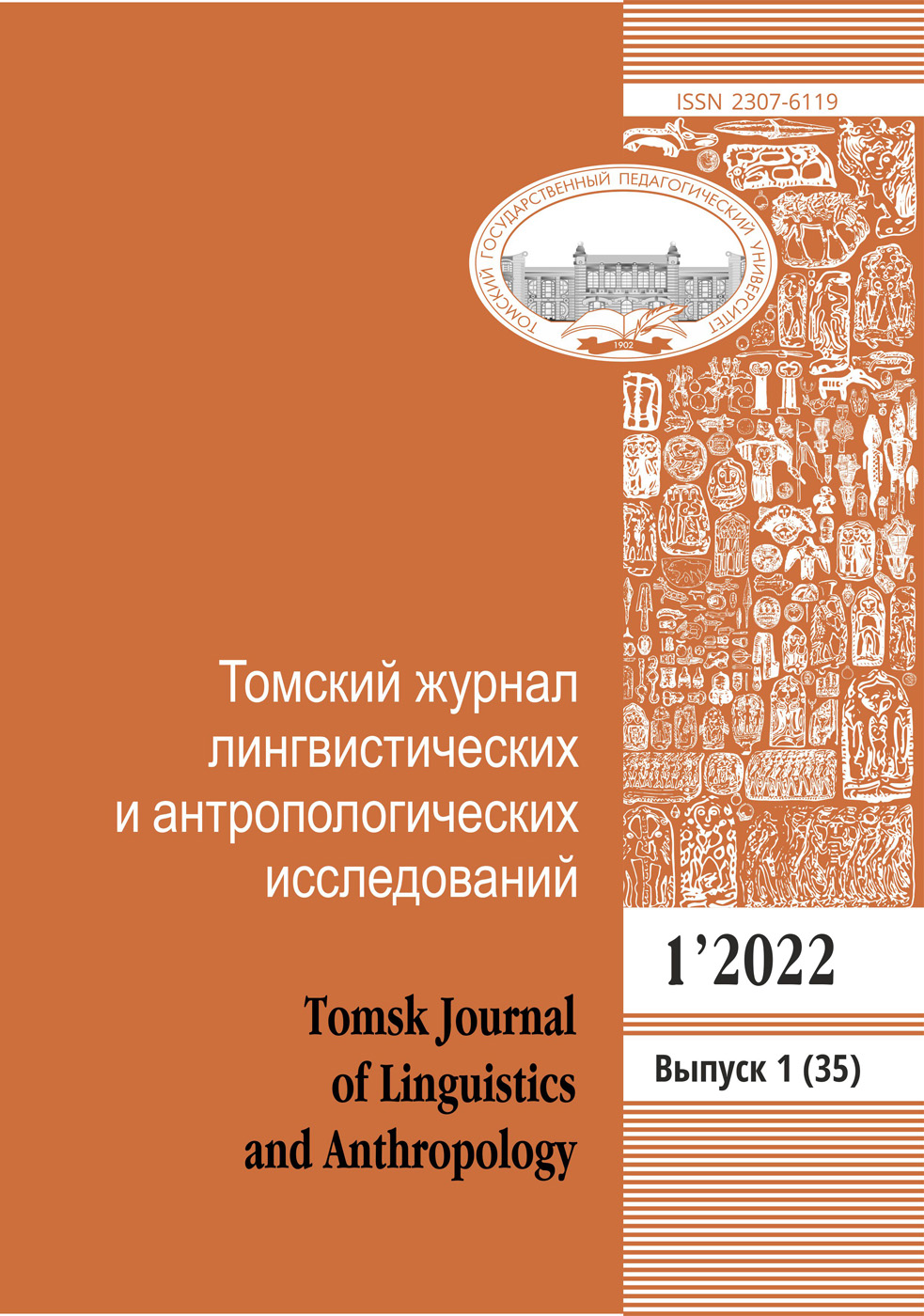DERIVATIONAL ANALYSIS OF THE NEWSPAPERS VOCABULARY IN PUBLICISTIC STYLE IN MODERN GERMAN
DOI: 10.23951/1609-624X-2019-9-23-31
Introduction. The article deals with the vocabulary of the modern journalistic text. The basis for the study are the German-language newspaper articles, which relate to the thematic category “politics”, the content of which reflects the changes in the political life of the country. The method of continuous sampling was the selection of appropriate lexical units from the data sources. The scientific novelty of the research consists in understanding the processes occurring in the word formation of the modern German language. Material and methods. Newspaper lexemes are the object of study. The goal-setting criterion in the work is the word-formation analysis of language material. In this regard, the most productive in modern German language turned out to be such methods of word-formation as word composition and word production. The revealed structural types of composites, a detailed description of their composition occupy a significant place in the work. The frequency components of such vocabulary in modern newspaper political texts are anglicisms. Internal bonding mechanisms influence the formation of the complex structure of composite units. In addition, the authors made an attempt to more or less generalize the semantics of the words that form the composites. The word-formation characteristic of the political newspaper lexicon takes into account the part of speech of the lexical units inherent in some grammatical features. The subject of research in the work, along with complex words, are also derived lexemes. Among them, derivative nouns as well as verbs predominate. Affixes, most of which are suffixes, are frequency ones. The methodological component of this study includes as the main method of component analysis, the method of wordformation models, descriptions. In summing up the results of the study, a quantitative method was used. Conclusion. The results of the study show the dominant position of the compound words revealed in the Germanlanguage political newspaper vocabulary. Borrowings from English are productive. Presented in General, the scientific justification can be used in the course of lexicology of the German language. The data obtained as a result of the study can be used in the preparation of analyses and reviews of trends in the development of modern German word formation. In conclusion, the prospects for further development of issues related to the word-formation specifics of the German-language journalistic vocabulary are outlined.
Keywords: German-language newspaper lexemes, compounding, Englishisms, derivative words, structure, semantics
References:
1. Gumbol’dt V. Izbrannyye trudy po yazykoznaniyu [The selected works in linguistics]. Moscow, Progress Publ., 2000. 400 p. (in Russian).
2. Dargewitz A. Die Sprache lebt und verändert sich. Zu neusten Tendenzen in der deutschen. Acta Neophilologica. 2012. XIV (1).
3. Barz I. Englisches in der deutschen Wortbildung. In: L. M. Eichinger, M. Meliss, M. J. D. Vazquez (ed.). Wortbildung heute. Tendenzen und Kontraste in der deutschen Gegenwartssprache. Studien zur deutschen Sprache. Forschungen des Instituts für deutsche Sprache. Bd. 44. Tübingen, Gunter Narr Verlag. S. 39–60.
4. Geiger K. Kim Jong – uns PLAN geht auf. Die Welt. 04.01.2018. S. 8.
5. Decker M. SPD-Fraktion im Schichtdienst. Berliner Zeitung. 09.07.2018. S. 4.
6. Dieterich J. Ende der Eiszeit am Horn von Afrika [End of the ice age in the Horn of Africa]. Berliner Zeitung. 09.07.2018. S. 4.
7. Deutschland. 16.09.2017. URL: https:// www.dw.com//mit-der-afd-bei-angela-merkel-40539377?maca=de-newsvine-sharing (accessed 15 June 2019).
8. Grimm H.-J. Konfi xe. Beobachtungen in Tageszeitungen und in Wörterbüchern. In: I. Schröder. Nominationsforschung im Deutschen. Fr/M, 1997. S. 277–284.
9. Eisenberg P. Grundriss der deutschen Grammatik. Bd. 1: Das Wort. 2. Aufl . Stuttgart-Weimar, 1998. 255 S.
10. Fuhrhop N. Grenzfälle morphologischer Einheiten. Tübingen, Narr Verlag, 1999. 186 S.
11. “Jamaika-aus“ zum Wort des Jahres 2017 gekürt. URL: https:// sputniknews.com/wissen /2017208318608792_jamaika_aus_wort_des_jahres_2017 (accessed 3 June 2019).
12. Gesellschaft für deutsche Sprache. URL: https://gfds.de/sondierung/ (accessed 12 June 2019).
13. Donalies E. Die Wortbildung des Deutschen: ein Überblick. 2. Aufl . Tübingen, Günter Narr Verlag, 2002.
14. Vater H. Einführung in die Sprachwissenschaft. Tübingen, Niemeyer, 2002. 332 p.
15. Fleischer W., Barz I. Wortbildung der deutschen Gegenwartssprache. Tübingen, 1992. 360 p.
16. Zuyev A. N., Molchanova I. D., Muryasov R. Z. et al. Slovar’ slovoobrazovatel’nykh elementov nemetskogo yazyka. Pod ruk. M. D. Stepanovoy [The dictionary of wordbuilding elements of German. Under the leadership of M. D. Stepanova]. Moscow, Rus. yaz. Publ., 2000. 536 p. (in Russian).
17. is.minu.cz. Die Wortbildung-Grimms.pdf. URL: https://www.die Wortbildung-Grammis.pdf (accessed 5 June 2019).
18. Movierung. URL: https://www.duden.de/rechtschreibung/Motion#Bedeutung-3 (accessed 14 October 2019).
19. Wahrig R. Großwörterbuch Deutsch als Fremdsprache. Wissen Media Verlag, GmbH Gütersloh München Cornelsen Verlag, 2008. 1215 S.
20. Gataullin R. G. Tendentsii v razvitii slovoobrazovaniya nemetskogo yazyka: suffi ksatsiya [Trends of the development of the German wordbuilding. The suffi xation]. Ufa, RIC BashSU Publ., 2017. 190 p. (in Russian).
21. Elsen H. Deutsche Konfi xe. Deutsche Sprache. Zeitschrift für Theorie und Praxis Dokumentation, 2005, vol. 33. URL: https://docviewer.yandex.ru/view/564383198/?*=dJhubTOTT9 (accessed 17 June 2019).
Issue: 9, 2019
Series of issue: Issue 9
Rubric: RESEARCH OF GERMANIC LANGUAGES
Pages: 23 — 31
Downloads: 926





